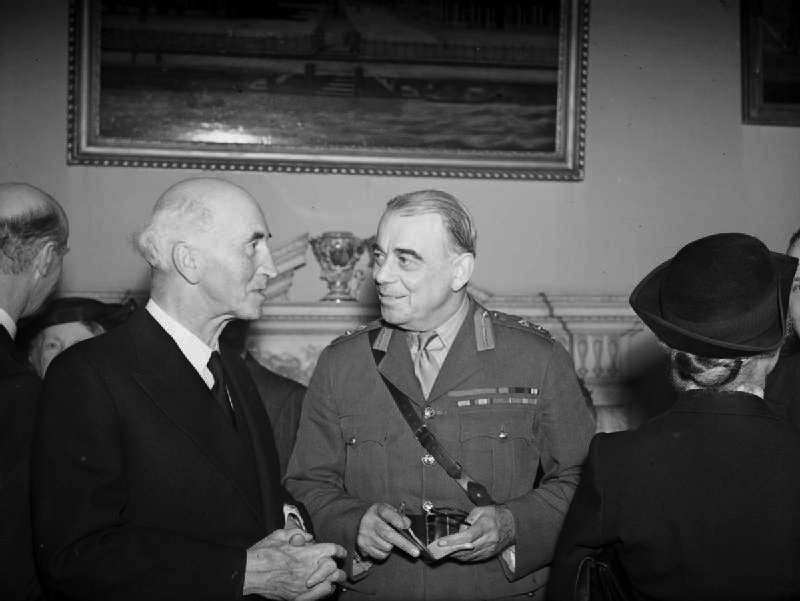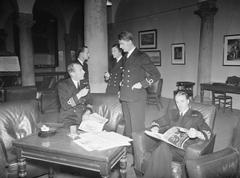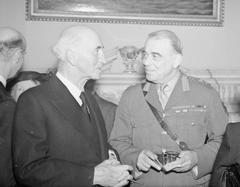
Comprehensive Guide to Buckingham Palace, London, United Kingdom
Date: 18/07/2024
Introduction
London, a city with a rich tapestry of history, offers an intriguing journey through its past and present. Among its numerous historical and cultural districts, few are as fascinating as the forgotten postal district of ‘KW’ or ‘Kentish West’. While modern visitors might be more familiar with London’s alphanumeric postcodes, the tale of KW provides a unique lens through which we can explore the evolution of London’s urban and postal landscape. Established in the mid-19th century, the KW postal district serves as a historical artifact that reveals the challenges and innovations in London’s postal system during a period of rapid expansion (Royal Mail History). Today, the area once known as KW is a vibrant blend of residential neighborhoods, commercial districts, and green spaces, offering a mix of historical charm and modern amenities. This guide not only delves into the historical significance of KW but also explores top attractions in other iconic London districts such as Westminster (W1) and South Kensington (SW1). Whether you’re a history enthusiast, a cultural explorer, or a casual visitor, this comprehensive guide aims to enhance your understanding and appreciation of London’s rich heritage (Visit London).
Table of Contents
- Introduction
- Unveiling the History of KW - London’s Forgotten Postal District
- Top Attractions in Westminster (W1) and South Kensington (SW1), London
- Exploring London’s Rich Cultural Heritage - A Guide to Iconic Sites and Visitor Tips
- Conclusion
Unveiling the History of KW - London’s Forgotten Postal District
The Significance of KW
While ‘KW’ might sound like a modern invention, perhaps a trendy brand or a new development, it actually represents a historical quirk of London’s postal system. Before the widespread use of postcodes, London was divided into numbered postal districts to simplify mail delivery in the rapidly growing metropolis. KW, standing for ‘Kentish West,’ is a fascinating remnant of this bygone era, offering unique insights into London’s postal history.
A Glimpse into KW’s Past
Established in 1866, the ‘KW’ designation encompassed parts of North West London. This system, innovative for its time, eventually proved insufficient to handle the city’s ever-expanding population and postal needs.
The Rise and Fall of the London Postal Districts
The story of KW is intertwined with the larger narrative of London’s postal districts. In the mid-19th century, London’s population exploded, leading to a surge in mail volume that overwhelmed the existing postal infrastructure. To address this challenge, Sir Rowland Hill, a postal reformer, spearheaded the creation of postal districts in 1856.
London was divided geographically, with each district assigned a letter code. The system initially included ten districts: EC, WC, N, NE, E, SE, S, SW, W, and NW. As London continued to grow, new districts like ‘Kentish Town’ (K) and ‘South Western’ (SW) were added in 1866 to further refine the system. ‘Kentish West’ (KW) emerged as a subdivision within the K district.
However, the postal district system, while groundbreaking, had its limitations. As London sprawled further outwards, the boundaries of these districts became increasingly blurred and difficult to manage. The system was ultimately deemed inadequate for the city’s complex and expanding needs.
The Introduction of Postcodes and the Legacy of KW
In 1959, London became the first city globally to implement a new, more comprehensive system - postcodes. This system, with its alphanumeric combinations, allowed for more precise location identification, revolutionizing mail sorting and delivery. The introduction of postcodes rendered the older postal districts largely obsolete.
Despite their official retirement, remnants of the old postal districts, including KW, continue to linger in London’s urban fabric. Sharp-eyed visitors might still spot them on older buildings, etched into stone facades or painted on street signs, serving as a subtle reminder of the city’s postal past. These ‘ghost signs,’ as they are often called, offer a tangible link to a bygone era and a glimpse into the evolution of London’s urban landscape.
KW Today - A Blend of History and Modernity
Today, the area historically designated as KW falls under the modern postcodes of NW1, NW3, and NW5. While the ‘KW’ designation is no longer officially used for postal purposes, it persists in the names of local businesses, organizations, and even a local newspaper, the ‘Kentish Weekender.’ This continued use speaks to a sense of local pride and a desire to preserve a connection to the area’s history.
The area once known as KW is now a vibrant mix of residential neighborhoods, bustling commercial districts, and green spaces. It’s home to a diverse community and offers a range of attractions for visitors, from historical landmarks to trendy cafes and independent shops. While the ‘KW’ of old may be gone, its legacy lives on in the unique character and charm of this part of London.
Visitor Information - Exploring KW’s Legacy
For those interested in London’s historical elements, the area formerly known as KW offers plenty of attractions. Visit the local parks, explore charming streets lined with historical buildings, or check out independent shops and cafes that retain the area’s unique character.
Special Events and Guided Tours
Consider joining a guided tour to delve deeper into the rich history of the KW area. Special events celebrating the local heritage are also held periodically, providing an excellent opportunity to learn more about this fascinating part of London.
Photographic Spots
Capture the essence of KW by visiting some of its most picturesque spots. Historical landmarks, old street signs, and vibrant local scenes make perfect subjects for photography enthusiasts.
FAQ
Q - What does ‘KW’ stand for? A - ‘KW’ stands for ‘Kentish West,’ a historical postal district in North West London.
Q - Is ‘KW’ still used in London’s postal system? A - No, the ‘KW’ designation is no longer officially used. It has been replaced by modern postcodes such as NW1, NW3, and NW5.
Q - Can I find ‘KW’ references in London today? A - Yes, remnants of the ‘KW’ designation can still be found on older buildings and street signs in the area.
Call to Action
Explore more about London’s historical landmarks and urban evolution by visiting our other related articles. Don’t forget to follow us on social media for more updates and historical insights!
Top Attractions in Westminster (W1) and South Kensington (SW1), London
London’s rich history and vibrant culture are beautifully represented in its districts W1 (Westminster) and SW1 (South Kensington). Whether you’re interested in royal residences, iconic landmarks, or world-renowned museums, these areas offer something for everyone.
Attractions in W1 (Westminster)
Historic Landmarks & Royal Residences
- Buckingham Palace - The official residence of the monarch, famous for the Changing of the Guard ceremony. Visiting hours are typically from 9:30 AM to 7:30 PM during the summer. (Royal Family)
- Houses of Parliament & Big Ben - The iconic clock tower and seat of the UK Parliament. Tours are available on Saturdays and during parliamentary recesses. (UK Parliament)
- Westminster Abbey - A UNESCO World Heritage site and coronation church of British monarchs. Open daily from 9:30 AM to 3:30 PM. (Westminster Abbey)
- Churchill War Rooms - The underground bunker where Winston Churchill and his government directed World War II. Open daily from 9:30 AM to 6:00 PM. (IWM)
- Banqueting House - The grand hall, part of the former Palace of Whitehall, known for its Rubens ceiling. Open daily from 10:00 AM to 5:00 PM. (Historic Royal Palaces)
Parks & Gardens
- St. James’s Park - A beautiful Royal Park with views of Buckingham Palace and a lake home to pelicans. (Royal Parks)
- Green Park - A tranquil green space linking St. James’s Park to Buckingham Palace. (Royal Parks)
- Regent’s Park - A vast park with formal gardens, a lake, an open-air theatre, and London Zoo. (Royal Parks)
Museums & Galleries
- The National Gallery - Home to a vast collection of European paintings from the 13th to the 19th centuries. Open daily from 10:00 AM to 6:00 PM. (The National Gallery)
- The National Portrait Gallery - Showcasing portraits of historically important and famous British people. Open daily from 10:00 AM to 6:00 PM. (National Portrait Gallery)
Other Attractions
- Trafalgar Square - A bustling public square with Nelson’s Column and the National Gallery.
- Covent Garden - A vibrant area with street performers, shops, restaurants, and the Royal Opera House. (Covent Garden)
- Oxford Street - A famous shopping street with department stores and high-street brands.
Attractions in SW1 (South Kensington)
Museums & Cultural Institutions
- Victoria and Albert Museum (V&A) - A world-renowned museum of art and design. Open daily from 10:00 AM to 5:45 PM. (V&A)
- Natural History Museum - Featuring dinosaur skeletons, a wildlife garden, and exhibits on the natural world. Open daily from 10:00 AM to 5:50 PM. (Natural History Museum)
- Science Museum - Interactive exhibits exploring science, technology, and medicine. Open daily from 10:00 AM to 6:00 PM. (Science Museum)
- Royal Albert Hall - A historic concert hall hosting a variety of performances, from classical music to rock concerts. (Royal Albert Hall)
Parks & Gardens
- Hyde Park - One of London’s largest Royal Parks, with Serpentine Lake, Speaker’s Corner, and Kensington Gardens. (Royal Parks)
- Kensington Gardens - Home to Kensington Palace, the Diana Memorial Playground, and the Albert Memorial. (Royal Parks)
Other Attractions
- Harrods - A luxurious department store known for its opulent displays and high-end goods. (Harrods)
- Brompton Oratory - A stunning Catholic church with ornate interiors and a peaceful atmosphere. (Brompton Oratory)
Visitor Tips
- Plan your itinerary - Both W1 and SW1 offer a wealth of attractions, so prioritize based on your interests.
- Utilize public transport - The London Underground (Tube) is an efficient way to navigate the city.
- Book in advance - Popular attractions often require pre-booked tickets, especially during peak season.
- Pack for all weather - London’s weather can be unpredictable, so be prepared for rain or shine.
- Enjoy the local scene - Explore beyond the main attractions and discover hidden gems, local pubs, and markets.
FAQs
What are the visiting hours for Buckingham Palace?
- Visiting hours for Buckingham Palace are typically from 9:30 AM to 7:30 PM during the summer.
How can I buy tickets for the Natural History Museum?
- Tickets for the Natural History Museum can be purchased online via their official website (NHM).
Iconic Historical Sites and Monuments
The Tower of London
The Tower of London, a historic castle on the River Thames, is a must-visit. It houses the Crown Jewels and offers a glimpse into England’s medieval past.
- Visiting Hours - Open daily from 9 AM to 5:30 PM (varies seasonally)
- Tickets - Adults £29.90, Children £14.90 (Book here)
- Nearby Attractions - Tower Bridge, The Shard
Buckingham Palace
The official residence of the British monarch, Buckingham Palace, is an iconic symbol of the UK.
- Visiting Hours - The State Rooms are open to visitors from July to October
- Tickets - Adults £26.50, Children £14.50 (Book here)
- Nearby Attractions - St James’s Park, The Mall
Cultural Hubs and Unique Experiences
South Bank
Home to the London Eye, Tate Modern, Shakespeare’s Globe, and Borough Market, South Bank is a vibrant cultural hub.
- Visiting Hours - Attractions vary; check individual websites
- Tickets - Varies by attraction
- Nearby Attractions - London Dungeon, National Theatre
Shoreditch
A trendy East London neighborhood, Shoreditch is a hub for street art, independent boutiques, and innovative restaurants.
- Must-Visit Spots - Boxpark, Old Spitalfields Market
- Nearby Attractions - Brick Lane, Columbia Road Flower Market
Practical Visitor Tips
Plan Ahead
Book accommodations, transportation, and popular attractions in advance, especially during peak season.
Utilize Public Transportation
London’s public transportation system, including the Tube, buses, and overground trains, is efficient and comprehensive. Purchase an Oyster card or use contactless payment for seamless travel.
Walk Whenever Possible
Walking allows you to discover hidden gems and soak in the city’s unique atmosphere.
Pack for All Weather
London’s weather can be unpredictable. Be prepared for rain or shine with layers and an umbrella.
Special Events and Guided Tours
London Festival of Architecture
An annual celebration of architectural experimentation, practice, and debate.
- Dates - June
- Highlights - Tours, installations, and exhibitions
Harry Potter Studio Tour
Explore the magic behind the Harry Potter films at Warner Bros. Studio Tour London.
- Tickets - Adults £47, Children £38 (Book here)
Frequently Asked Questions (FAQ)
Q - What are the best times to visit London?
A - The best times to visit London are during spring (March to May) and autumn (September to November) when the weather is mild, and tourist crowds are smaller.
Q - How do I get around London?
A - The best ways to get around London are by using public transportation (Tube, buses) or walking. An Oyster card or contactless payment makes travel easy and cost-effective.
Q - Are there any free attractions in London?
A - Yes, many of London’s top museums and galleries, such as the British Museum, Tate Modern, and the National Gallery, offer free admission.
Conclusion
London’s rich cultural heritage, iconic landmarks, and vibrant neighborhoods make it a must-visit destination. Plan your trip, explore beyond the tourist trail, and immerse yourself in the city’s diverse offerings for a truly memorable experience. For more travel tips and updates, follow us on social media or visit our website.
Call to Action
Download our mobile app Audiala for personalized travel recommendations, exclusive deals, and more in-depth guides to London’s cultural sites. Don’t miss out on our latest posts and follow us on social media for the latest updates and tips.
Conclusion
London’s rich cultural and historical heritage is vividly displayed through its diverse districts and landmarks. The story of KW, or ‘Kentish West’, although less known, offers a fascinating glimpse into the city’s past postal system and urban development. This historical narrative is complemented by the vibrant attractions found in Westminster (W1) and South Kensington (SW1), areas that showcase the regal and cultural essence of London. From the historical remnants of KW, still visible on some buildings and signs, to the bustling modernity of Westminster and South Kensington, each district contributes to the mosaic that is London. Exploring these areas offers visitors a unique blend of old and new, inviting them to appreciate the city’s evolution over time. Whether it’s the historical intrigue of KW, the iconic landmarks of Westminster, or the cultural hubs of South Kensington, London’s districts promise an enriching experience. For those planning a visit, this guide provides a wealth of information to navigate and appreciate the rich tapestry of London’s heritage (Royal Mail History, Visit London).
References
- Royal Mail History, 2024, Royal Mail Group Royal Mail History
- Visit London, 2024, Visit London Visit London






















































































































































































































































